JUMP TO SECTION
Hiring Best Practices | Future of Hiring
25 Best HR AI Tools for Every Team: Sourcing, Interviewing, Onboarding & Beyond
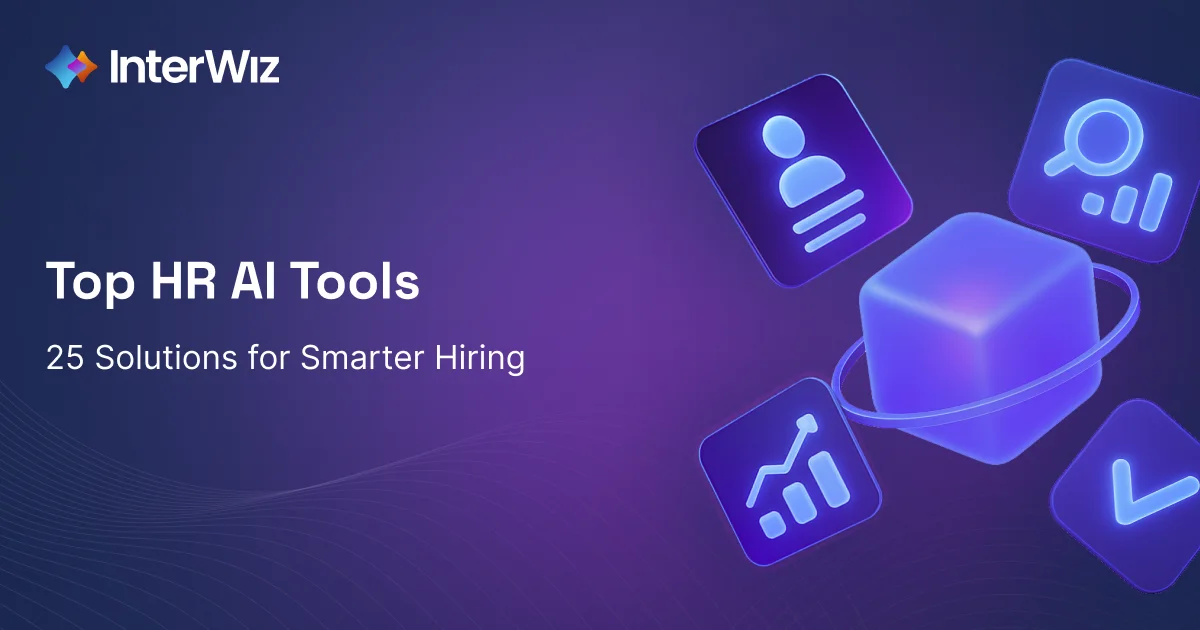
Over 65% of HR leaders now utilize AI-powered tools to expedite hiring, mitigate bias, and enhance employee retention, and this number is only expected to grow.
HR AI tools use machine learning, natural language processing, and predictive analytics to streamline every stage of the HR process, from resume screening and interview evaluations to onboarding and workforce planning.
However, with dozens of platforms flooding the market, it’s challenging to determine which tool best suits each need.
This article breaks down the top AI tools by function, showing you the best options for sourcing, interviewing, onboarding, performance management, and HR analytics in 2025. You’ll find feature comparisons, real-world use cases, and subtle insights on when to consider tools like InterWiz for more specialized interviewing needs.
Key Takeaways
AI is now embedded across every stage of HR, from sourcing and interviewing to onboarding, performance, and analytics.
The most effective HR AI tools are function-specific, scalable, and designed to support smarter, faster, and fairer decisions.
The future of HR is AI-augmented, not AI-replaced, with tools like InterWiz, Visier, and Enboarder already reshaping how teams hire and grow talent.
What Are HR AI Tools and How Are They Transforming HR?
HR AI tools are intelligent software solutions that apply machine learning, natural language processing, and predictive analytics to streamline and improve core HR functions. These include everything from candidate sourcing and interviews to onboarding, performance evaluations, and workforce planning.
Rather than replacing HR professionals, these tools are designed to enhance their capabilities by automating repetitive tasks, providing real-time insights, and reducing the risk of human bias. For example, AI can scan thousands of resumes in seconds to match candidates with open roles based on qualifications, experience, and even cultural fit.
According to Gartner, over 80% of enterprises are using or planning to use AI in at least one area of HR. Whether through chatbots that handle employee queries or platforms that analyze performance trends, AI is helping HR teams work faster, make more consistent decisions, and focus on what matters most: people.
HR AI Tools for Candidate Sourcing and Resume Screening
Recruiters today face a double bind: qualified candidates are harder to reach, and the volume of unqualified applicants is higher than ever. Traditional sourcing methods, keyword search, manual resume screening, and LinkedIn outreach simply don’t scale in fast-moving, competitive markets.
This is where AI sourcing tools step in. These platforms use machine learning, natural language processing, and behavioral data to surface top-fit candidates, even before they apply. Instead of matching based on job titles alone, they evaluate skills, patterns, and context, dramatically improving both speed and quality of shortlists.
Here’s how leading AI sourcing platforms are changing the game in 2025:
1. SeekOut
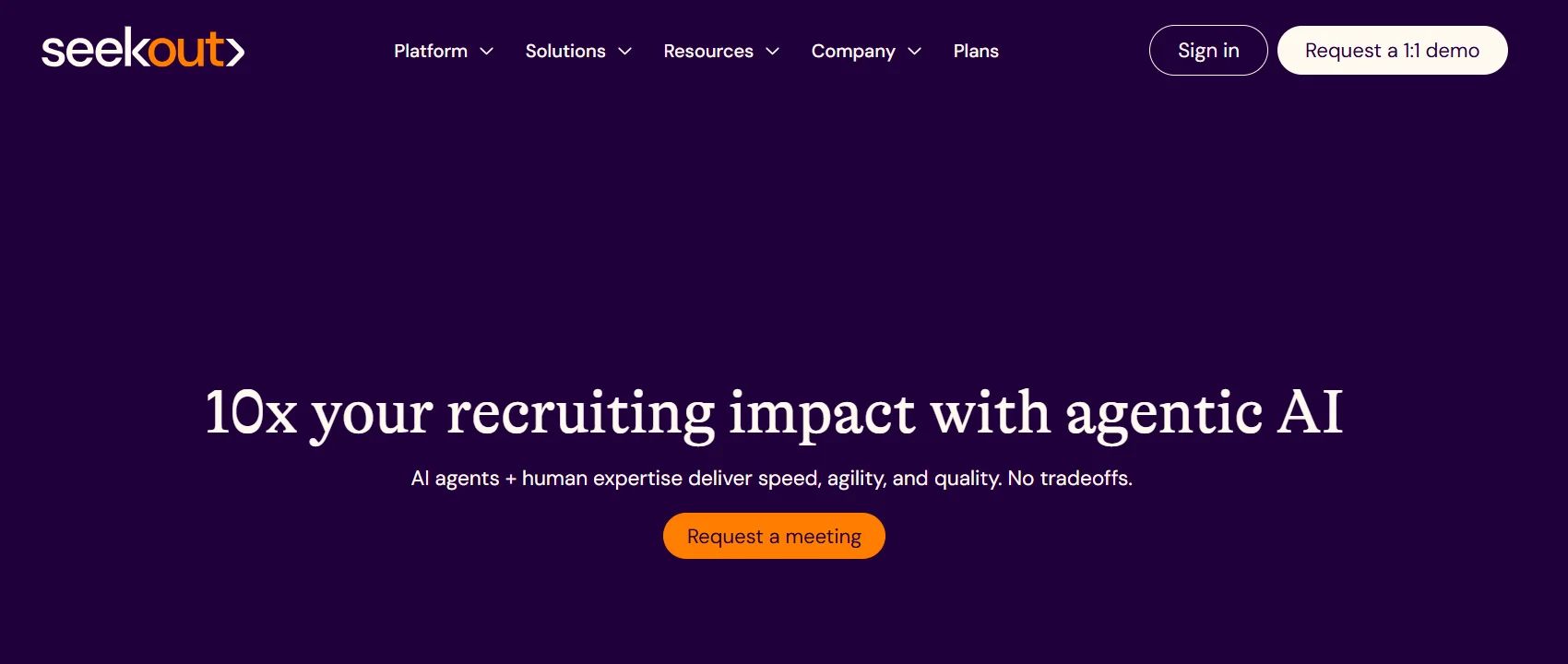
SeekOut goes beyond keyword search by mining data from public profiles, code repositories, and internal systems to uncover talent that most tools miss. It’s especially strong for diversity-driven hiring, with anonymized candidate sourcing and filters that surface underrepresented talent.
How it works: Uses AI to analyze signals across multiple data sources, not just resumes, to evaluate candidate skills and potential.
What it solves: Reduces sourcing bias and helps companies access untapped talent pools.
Who it's for: Enterprise hiring teams, especially in tech or R&D, with a focus on hard-to-fill or diverse roles.
2. hireEZ
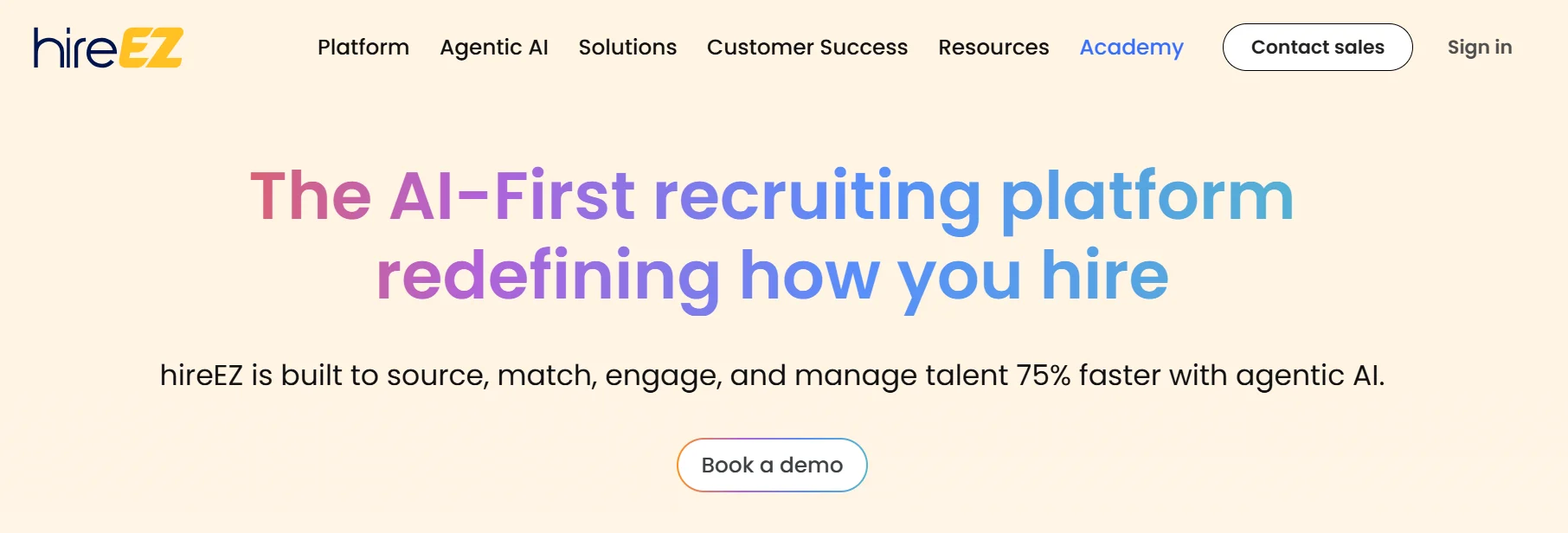
hireEZ focuses on proactive hiring. Its AI scans the open web to build enriched talent profiles, then automates personalized outreach campaigns based on candidate behavior. Recruiters get full-funnel visibility: from discovery to engagement and conversion.
How it works: AI-driven search pulls candidates from 45+ platforms and personalizes multi-touch outreach via email or LinkedIn.
What it solves: Saves recruiters time on sourcing and follow-up; increases response rates from passive talent.
Who it's for: Growing teams or agencies doing outbound/headhunting at scale.
3. Eightfold AI
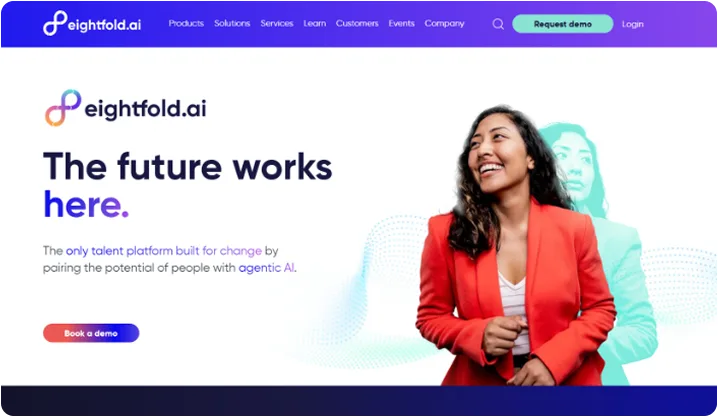
Eightfold AI isn’t just a sourcing tool; it’s a talent intelligence engine. Its algorithms analyze billions of career trajectories to match people to jobs based on capability and potential, not just past roles. It also models the likely impact of a hire on team diversity and long-term retention.
How it works: AI assesses not just “who fits” but “who thrives” based on past hiring success and projected career paths.
What it solves: Elevates sourcing from transactional matching to strategic workforce planning.
Who it's for: Global enterprises pursuing skills-based, bias-aware hiring at scale.
4. Paradox AI (Olivia)
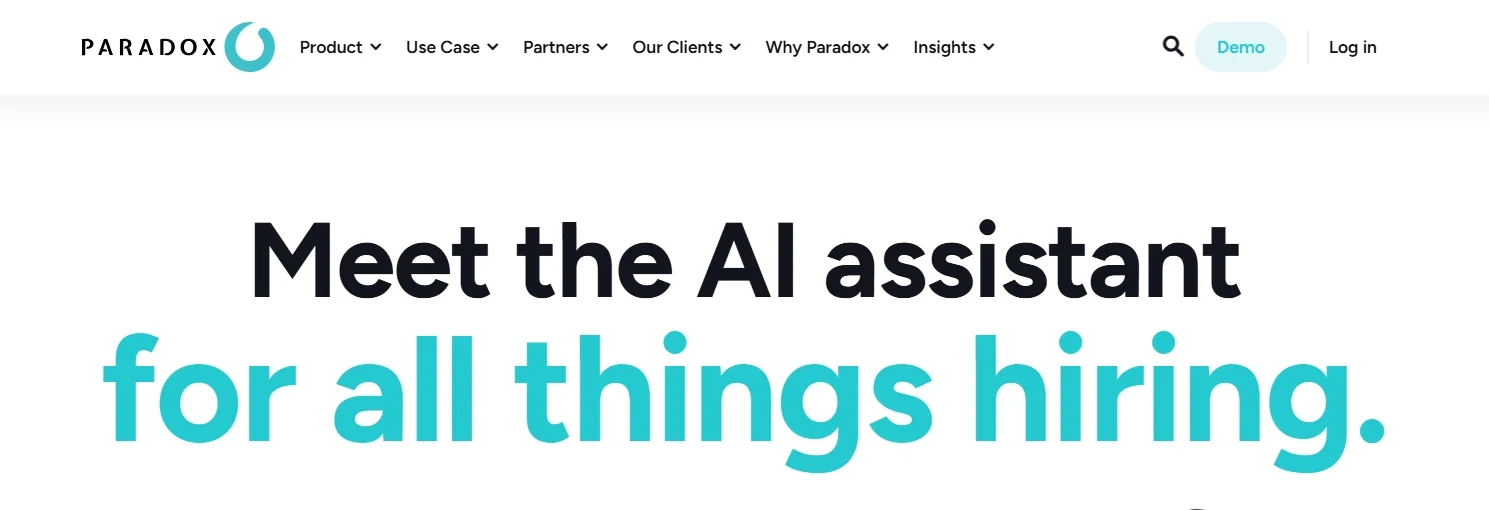
Paradox AI transforms the early hiring experience with Olivia, a virtual recruiting assistant that chats with candidates, answers their questions, and schedules interviews autonomously. It removes friction for both candidates and recruiters, especially in high-volume roles.
How it works: Candidates apply and get screened via AI chat, which captures qualifying data and handles scheduling in real time.
What it solves: Accelerates early-stage screening, especially for frontline or hourly roles with high application volume.
Who it's for: HR teams in retail, healthcare, hospitality, and other shift-based industries.
5. Manatal
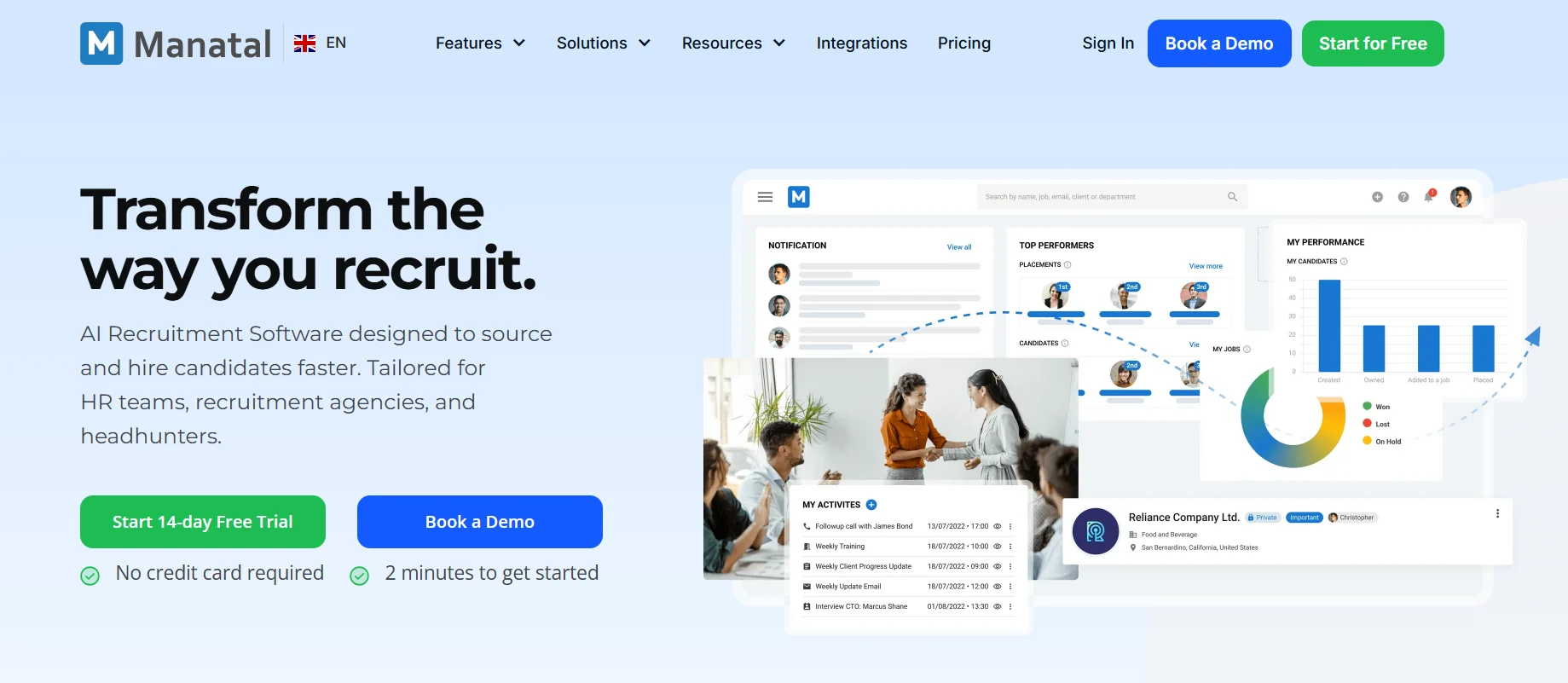
Manatal offers small and mid-sized teams an affordable way to implement AI-powered screening. It parses resumes and assigns each applicant a relevance score, learning from hiring outcomes to improve future recommendations. It’s designed for ease of use without sacrificing intelligence.
How it works: AI ranks candidates based on job match and historical hiring patterns.
What it solves: Replaces gut-feel screening with structured, data-informed decision-making.
Who it's for: SMBs that want smart screening tools without the complexity or cost of enterprise platforms.
HR AI Tools for Interviewing and Candidate Evaluation
Interviewing remains one of the most time-consuming and inconsistent stages in hiring. AI tools are changing that by automating not only interview scheduling, but also the evaluation itself, from soft skills to technical capabilities. These platforms use video, text, or coding tasks to assess candidates quickly and objectively, helping teams scale interviews while improving fairness and accuracy.
1. InterWiz
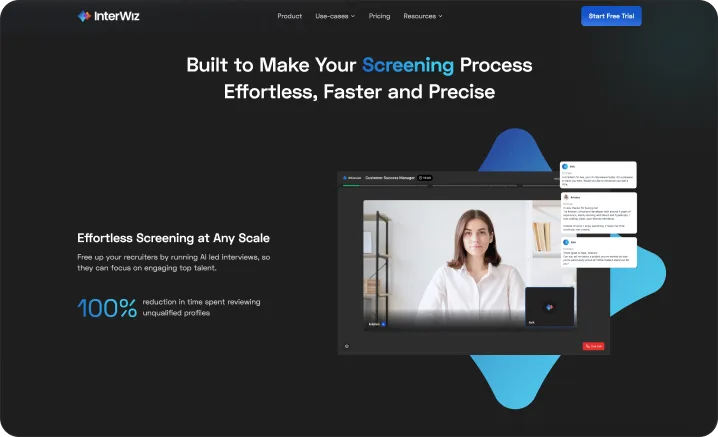
InterWiz is built for companies hiring developers, analysts, and other problem-solvers at scale. It automates both screening and in-depth interviews, including coding challenges, communication tasks, and role-specific questions. After each interview, it delivers structured reports with scores, insights, and candidate rankings.
Best for: Tech companies and staffing firms
Solves: Interview bottlenecks, inconsistent evaluations, and engineer bandwidth
AI Capabilities: Automated AI interviews, post-interview scoring, skill + personality analysis
2. HireVue
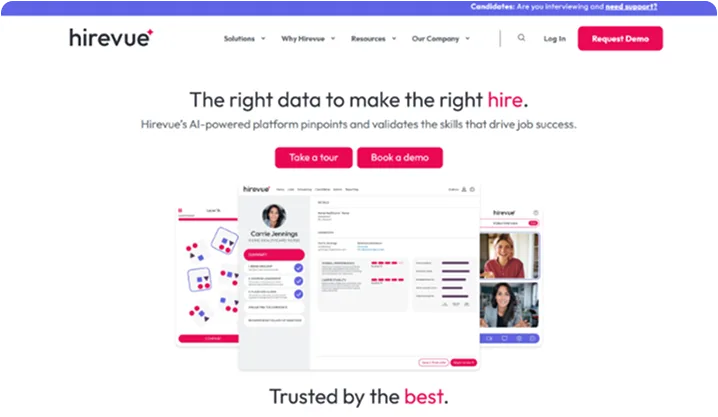
HireVue enables on-demand video interviews, where AI analyzes recorded responses for traits like communication and role fit. It also supports game-based and coding assessments, making it a comprehensive screening tool for large organizations.
Best for: Enterprise hiring across sales, support, and graduate roles
Solves: High-volume screening, interview consistency
AI Capabilities: Video analysis, behavioral scoring, predictive recommendations
3. Sapia.ai
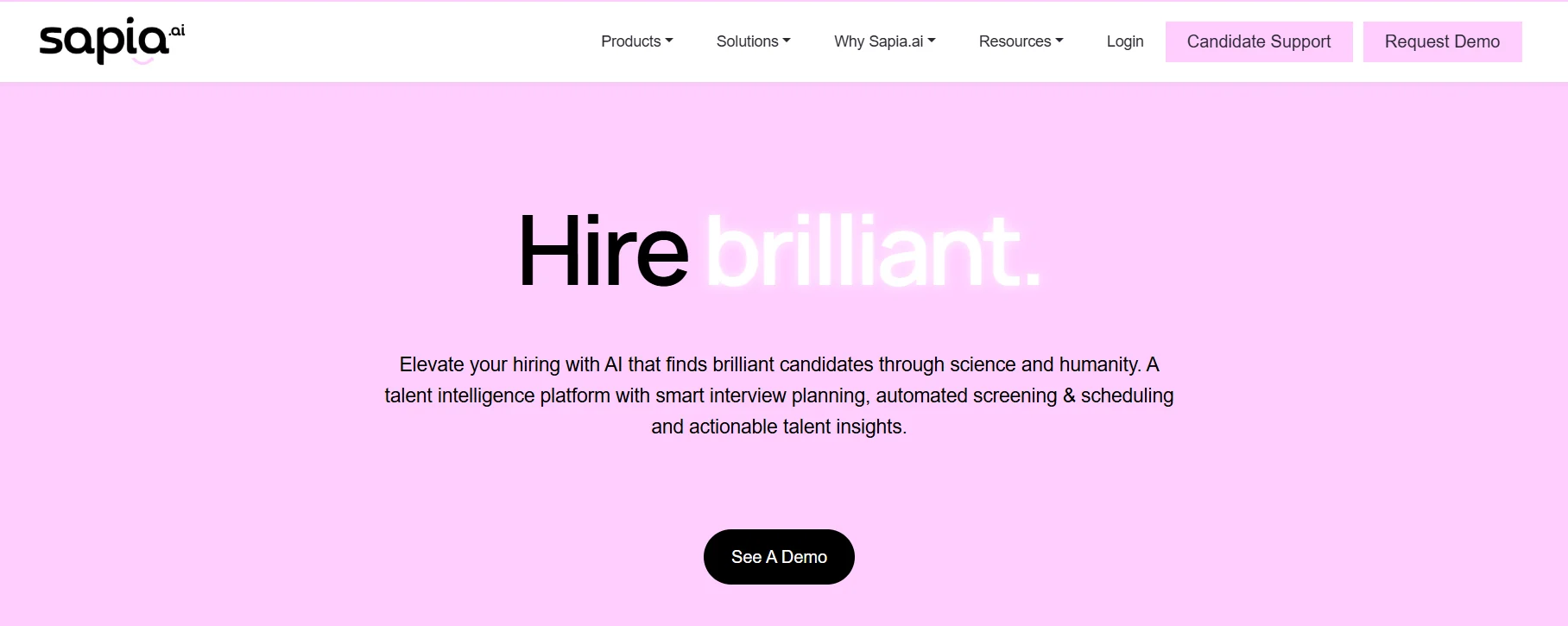
Sapia uses a text-based interview format, where candidates respond to structured questions in a chat. Its AI analyzes tone, word choice, and communication patterns to predict alignment with key competencies, all without visual or audio input, reducing bias.
Best for: DEI-conscious employers and early-career hiring
Solves: Interview anxiety, unconscious bias
AI Capabilities: NLP-based personality assessment, blind evaluation
4. iMocha
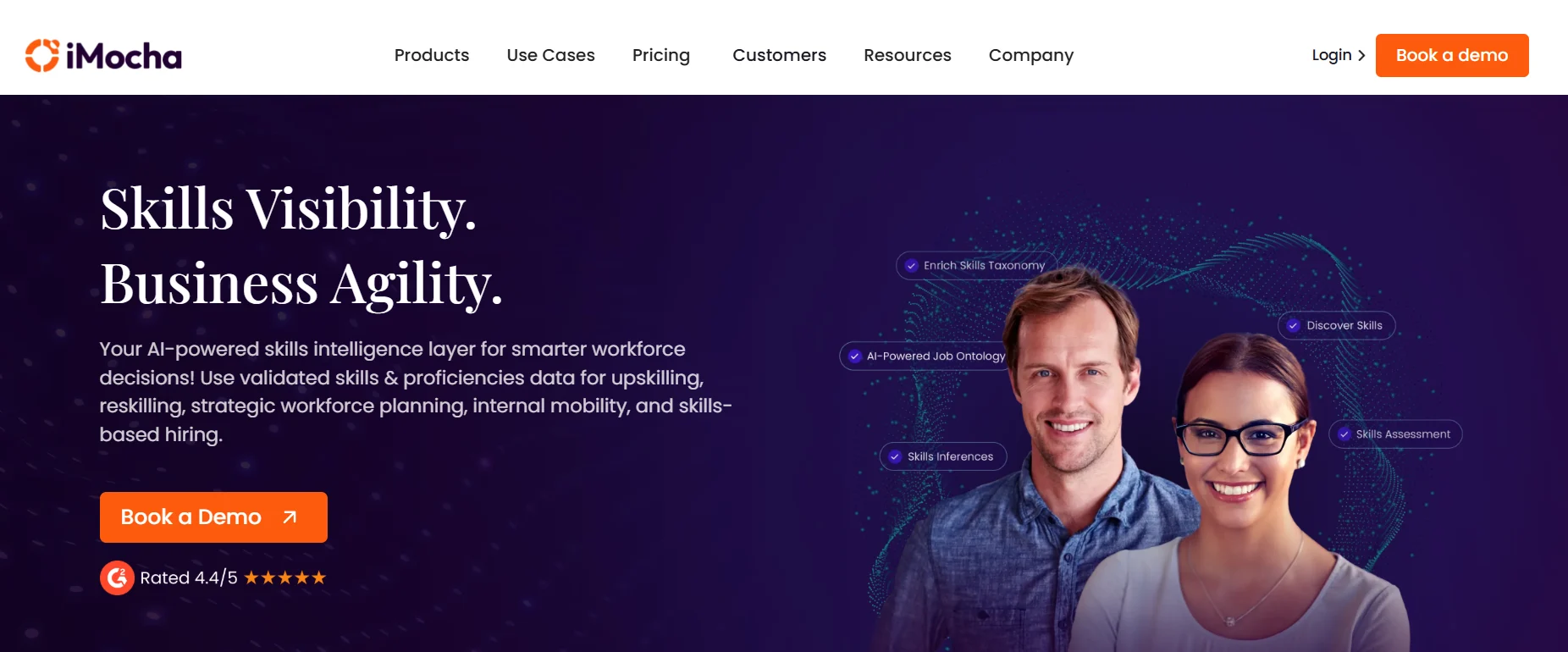
iMocha specializes in skill-first hiring. It blends AI-proctored coding and aptitude tests with structured interview workflows. The platform scores candidates instantly and flags anomalies to ensure test integrity.
Best for: Technical and multilingual roles
Solves: Skills validation, test proctoring
AI Capabilities: Domain-specific assessments, automated scoring, cheating detection
5. Interviewer.AI

Interviewer.AI offers a simple, affordable way to automate initial interviews. Candidates respond to video prompts, and the AI evaluates verbal and non-verbal cues to rank candidates.
Best for: SMBs hiring for communication-centric roles
Solves: Time spent on first-round interviews
AI Capabilities: Video response analysis, candidate ranking, interview summaries
AI Tools for Onboarding and Employee Experience
Onboarding is where employee engagement begins, or breaks. In 2025, AI tools are transforming this stage by making it more personalized, proactive, and scalable. These platforms don’t just automate tasks; they respond to behavior, adapt journeys in real time, and ensure no new hire gets left behind.
Here are the top AI-powered tools enhancing onboarding and early employee experience:
1. Enboarder
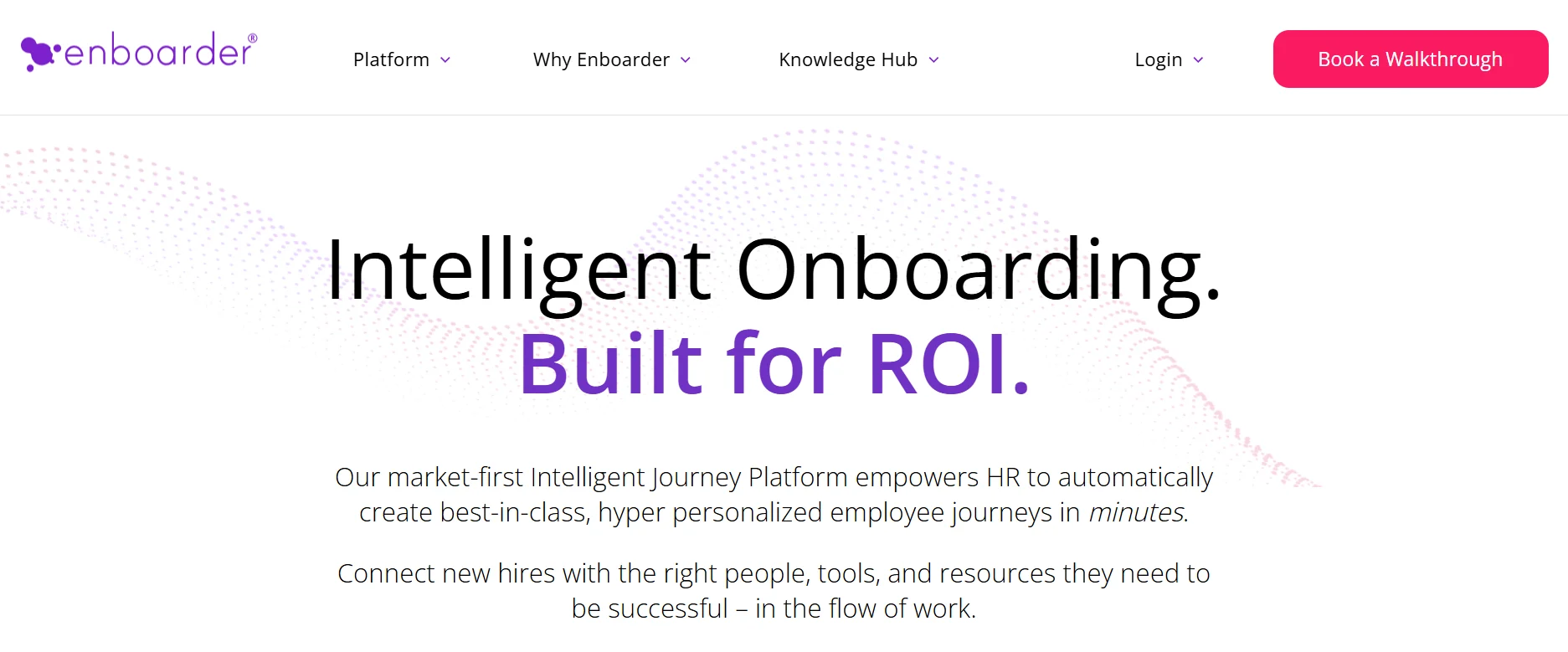
Enboarder uses behavioral triggers to send personalized nudges to new hires and managers, helping teams stay engaged without micromanaging the process.
Best for: Mid-size to enterprise teams focused on reducing early attrition
AI Capabilities: Behavioral workflows, engagement tracking, personalized nudges
Solves: Passive onboarding and missed engagement opportunities
2. Talmundo
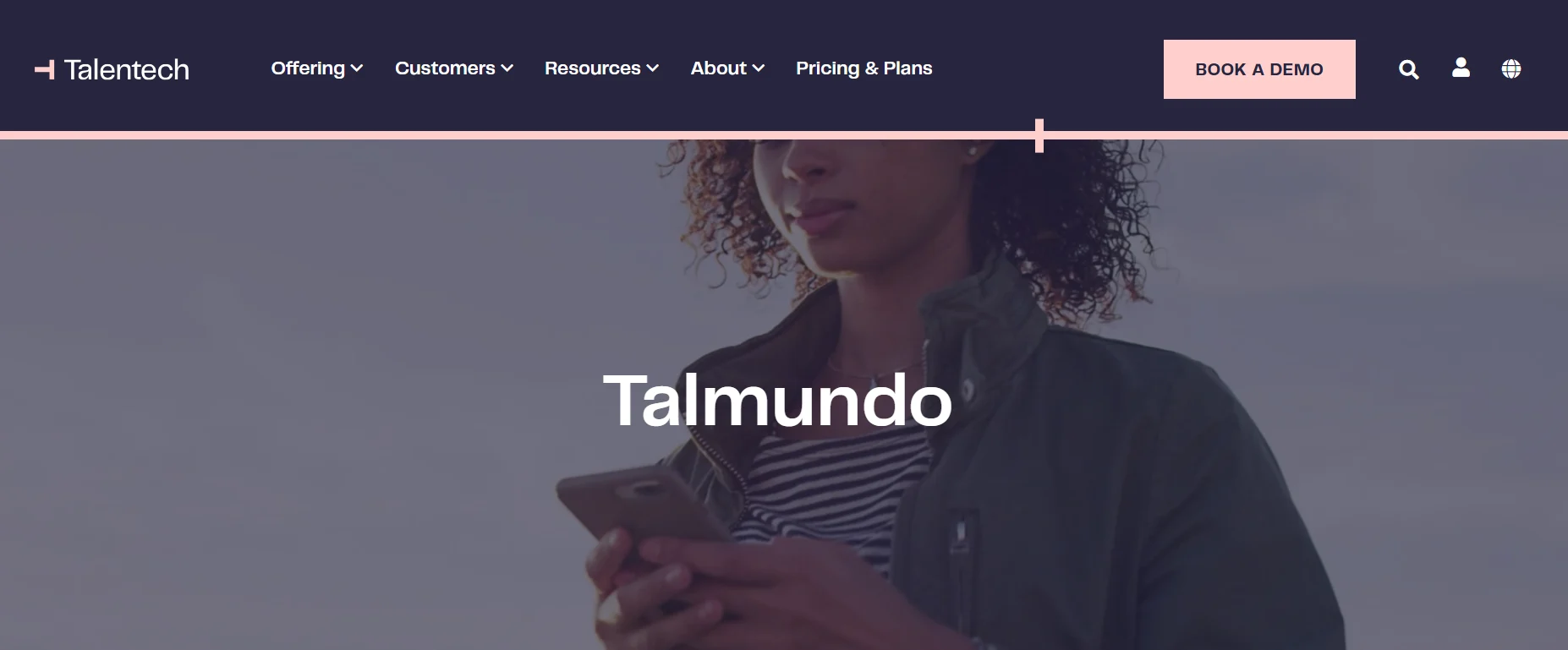
Talmundo delivers localized onboarding experiences at scale, adapting journeys based on geography, department, or role.
Best for: International enterprises
AI Capabilities: Journey customization, multilingual content delivery, analytics
Solves: Inconsistent onboarding across regions and teams
3. Leena AI
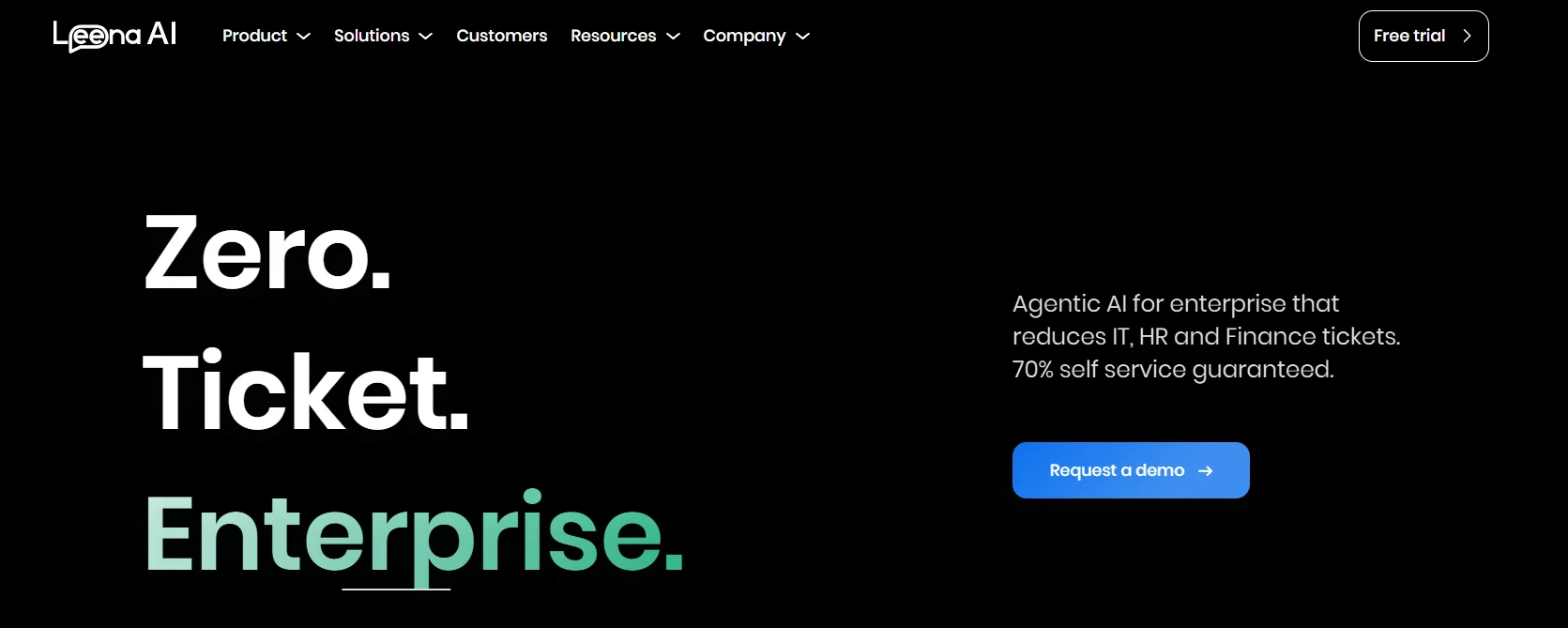
Leena AI acts as a 24/7 onboarding assistant, instantly answering questions and providing documents through a chat-based interface.
Best for: HR teams handling high volumes of repetitive onboarding questions
AI Capabilities: Chat-based knowledge assistant, document automation
Solves: Delays in HR response time and information access
4. BambooHR
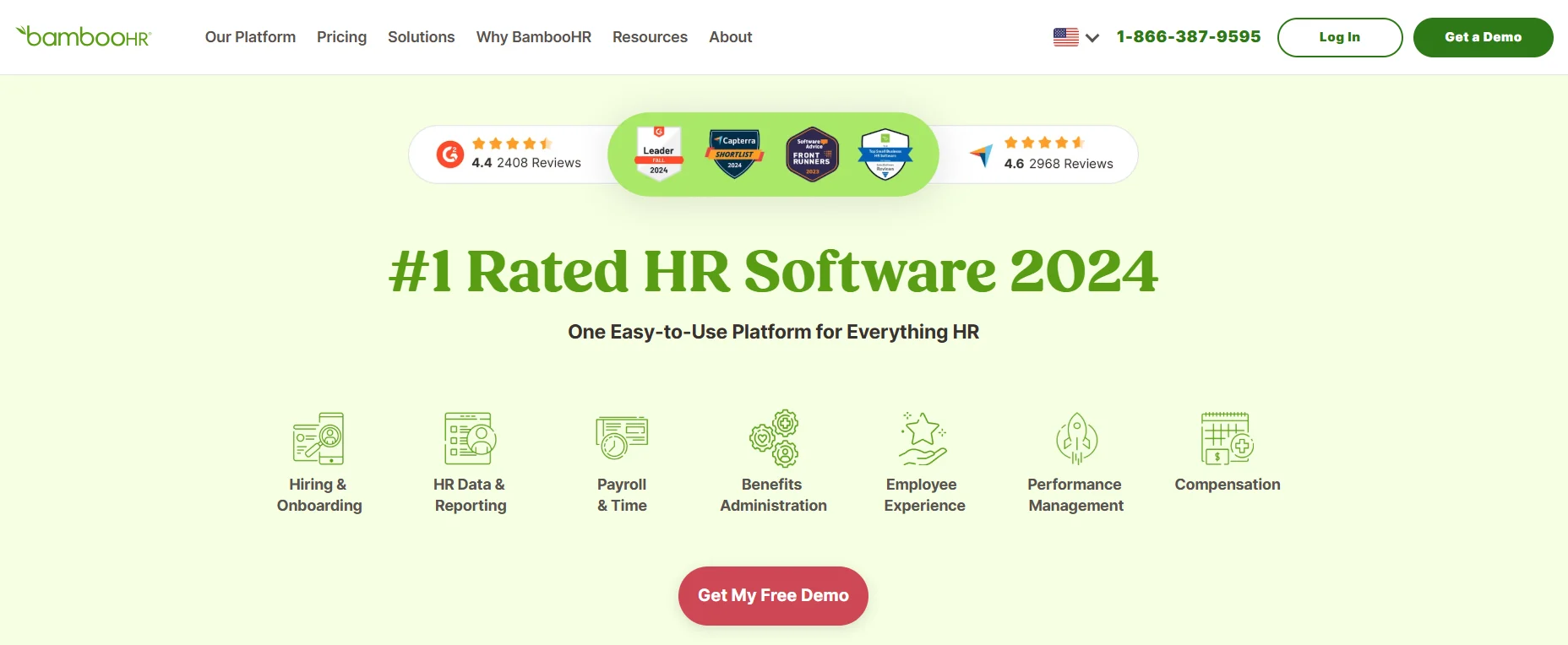
BambooHR's AI-enhanced onboarding tools analyze feedback and flag drop-off points to help small teams act on engagement signals faster.
Best for: SMBs using an all-in-one HRIS
AI Capabilities: Feedback analysis, early disengagement detection
Solves: Missed signals in new hire feedback and follow-ups
5. Appical
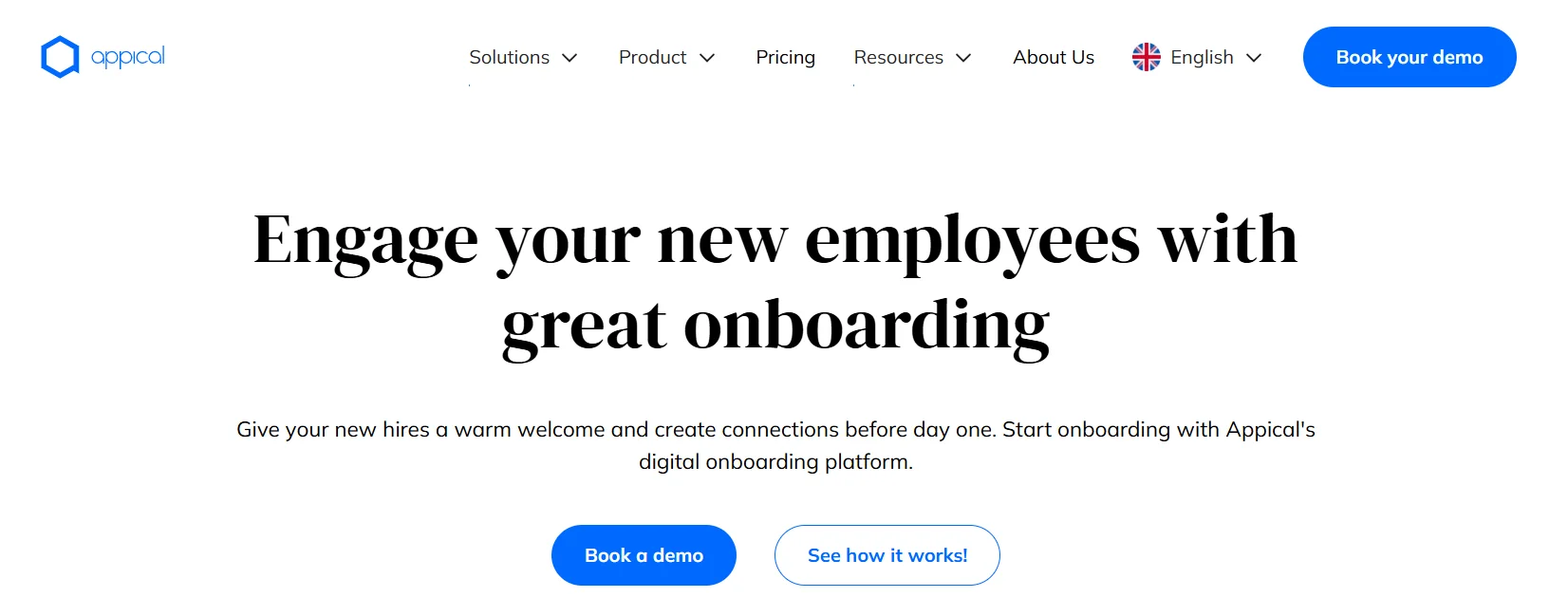
Appical offers gamified, mobile-first onboarding with AI-adaptive content that keeps new hires engaged through interactive modules.
Best for: Teams looking to modernize onboarding delivery
AI Capabilities: Adaptive content, gamification analytics
Solves: Low engagement during early onboarding stages
AI Tools for Performance Management and Retention
Performance reviews have long been criticized as slow, subjective, and disconnected from real work. AI tools are changing that by turning performance management into a continuous, data-informed process. Instead of relying on quarterly check-ins or manager memory, these platforms use real-time feedback, engagement signals, and predictive analytics to identify high performers, flag flight risks, and personalize development at scale.
Here are the leading AI-powered platforms helping teams manage performance and improve retention in 2025:
1. Lattice
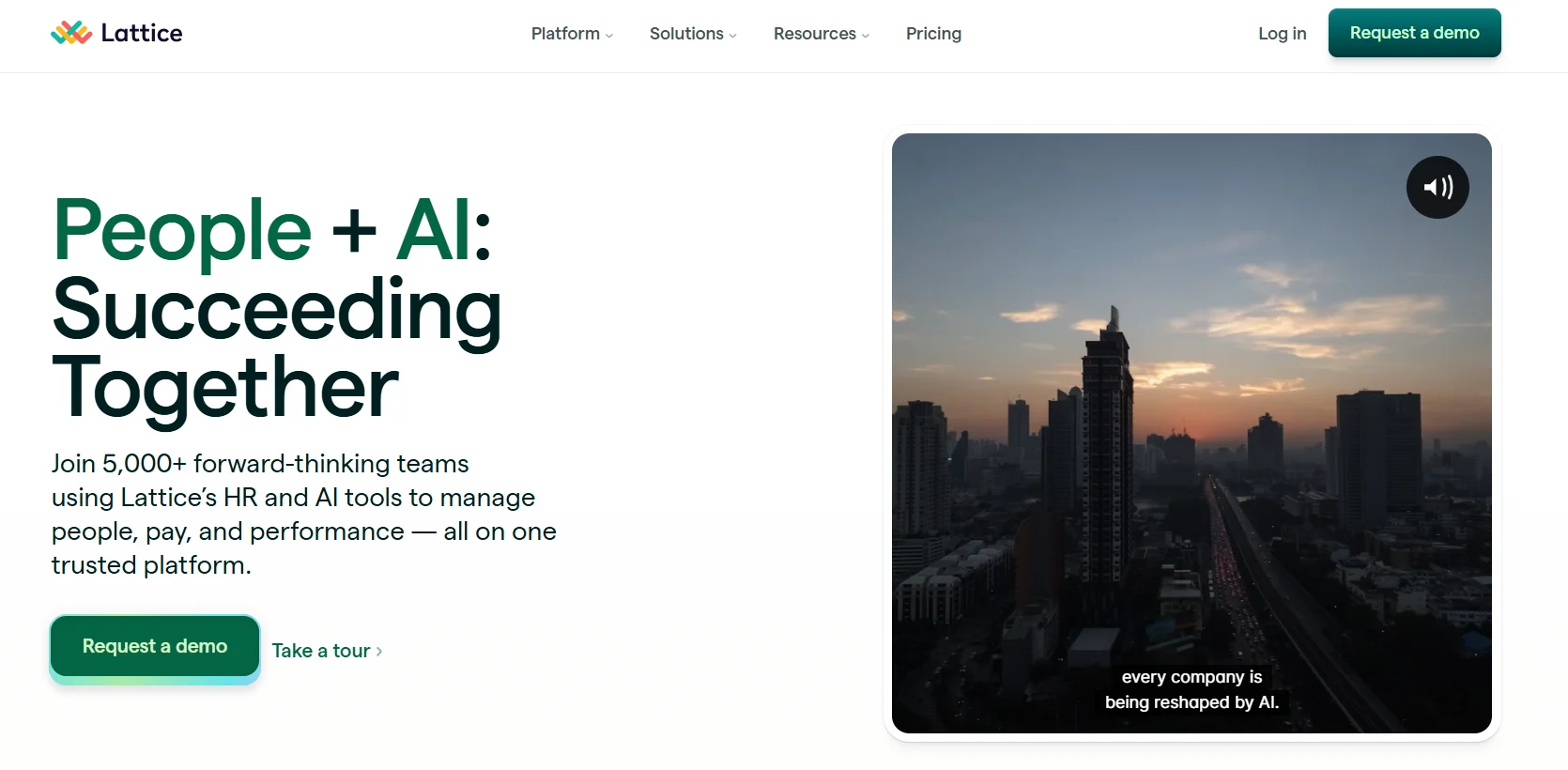
Lattice blends performance management with engagement and career growth. Its AI surfaces insights from review comments, survey data, and usage patterns, helping HR teams act on feedback and retention risks before they escalate.
Best for: Mid-size to enterprise teams building performance + engagement cultures
AI Capabilities: Feedback summarization, attrition prediction, development recommendations
Solves: Inconsistent reviews, slow response to disengagement
2. 15Five
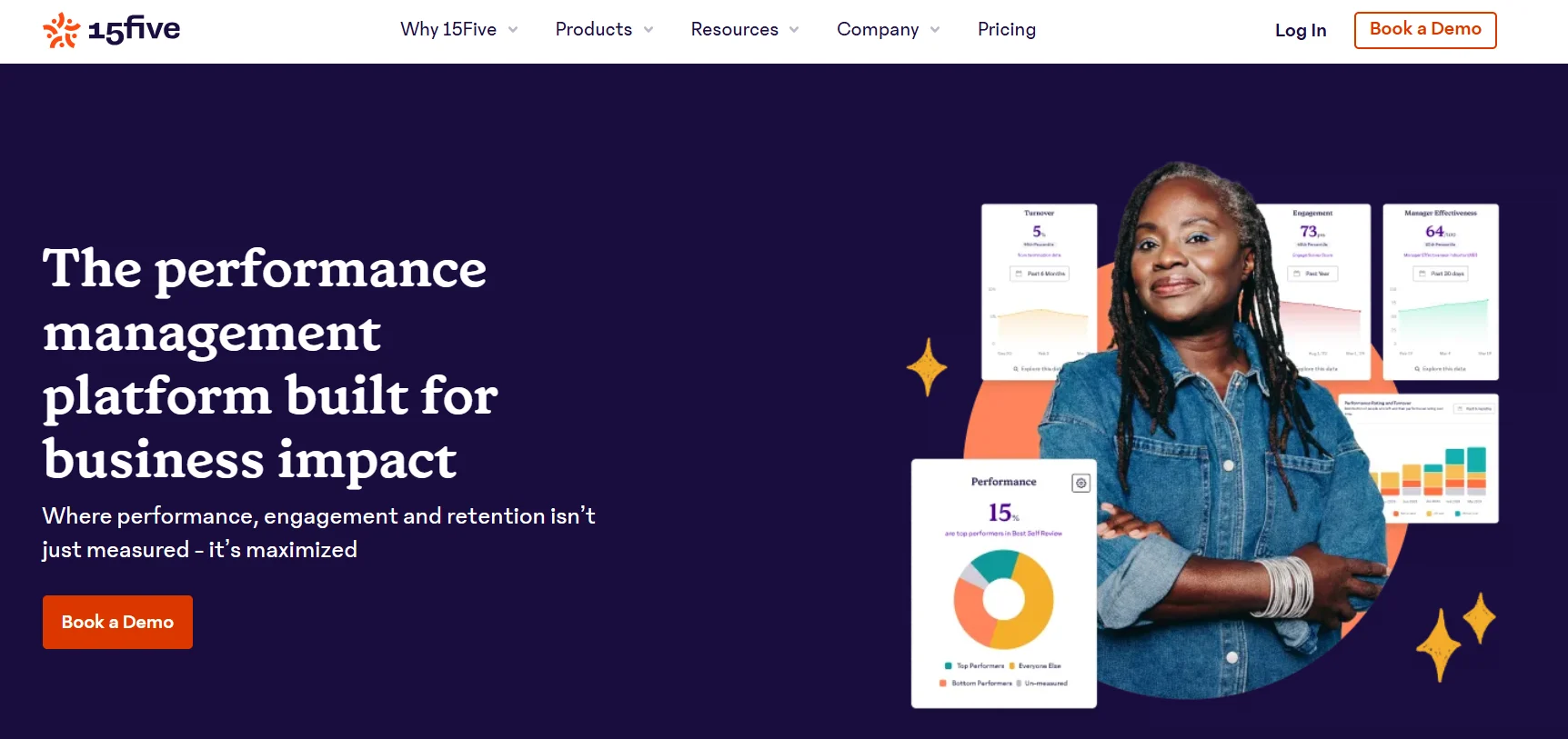
15Five combines performance tracking with AI-powered coaching. Its system analyzes check-ins and survey responses to offer managers personalized advice on how to support each team member.
Best for: Mid-market companies prioritizing manager development
AI Capabilities: Sentiment analysis, AI coaching tips, goal-setting guidance
Solves: Lack of manager support and one-size-fits-all development
3. Effy AI
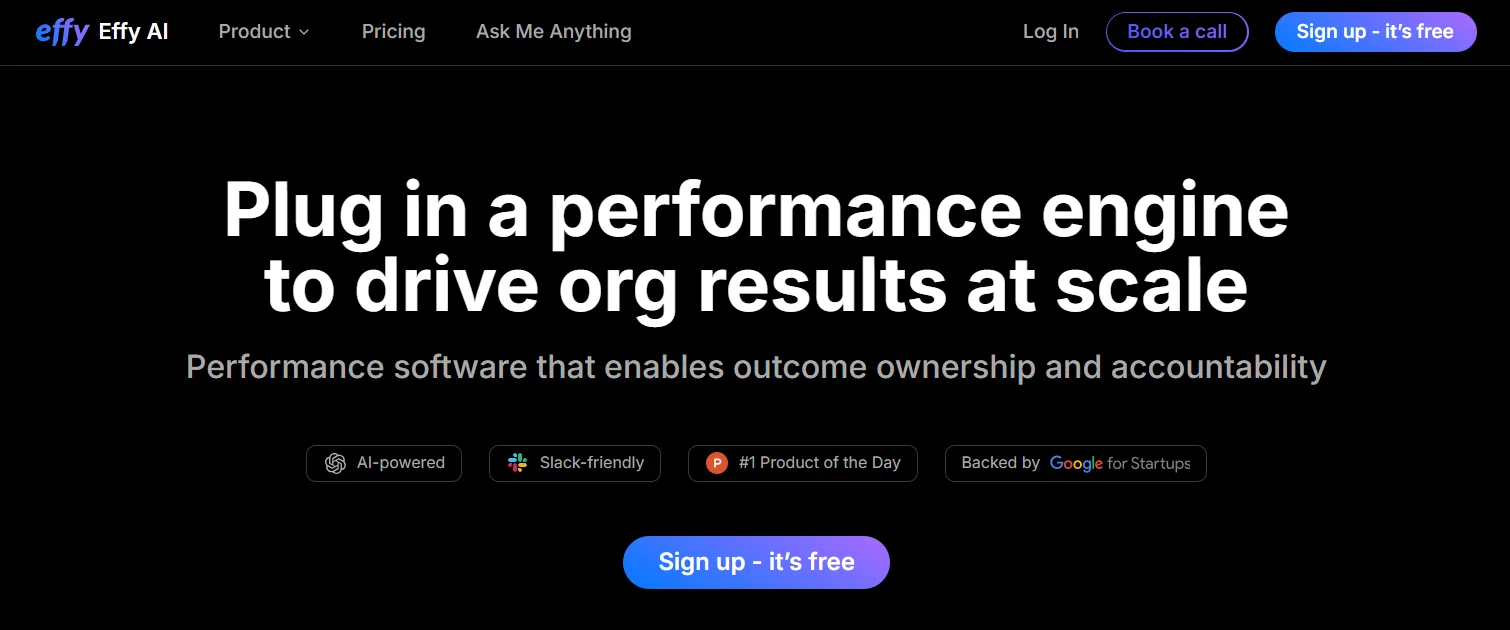
Effy AI automates performance review workflows for small teams. It generates AI-written summaries, development plans, and even feedback phrasing based on 360° inputs.
Best for: Startups and SMBs with limited HR capacity
AI Capabilities: Review generation, sentiment scoring, Slack-integrated feedback
Solves: Time-consuming reviews and inconsistent feedback quality
4. CultureAmp
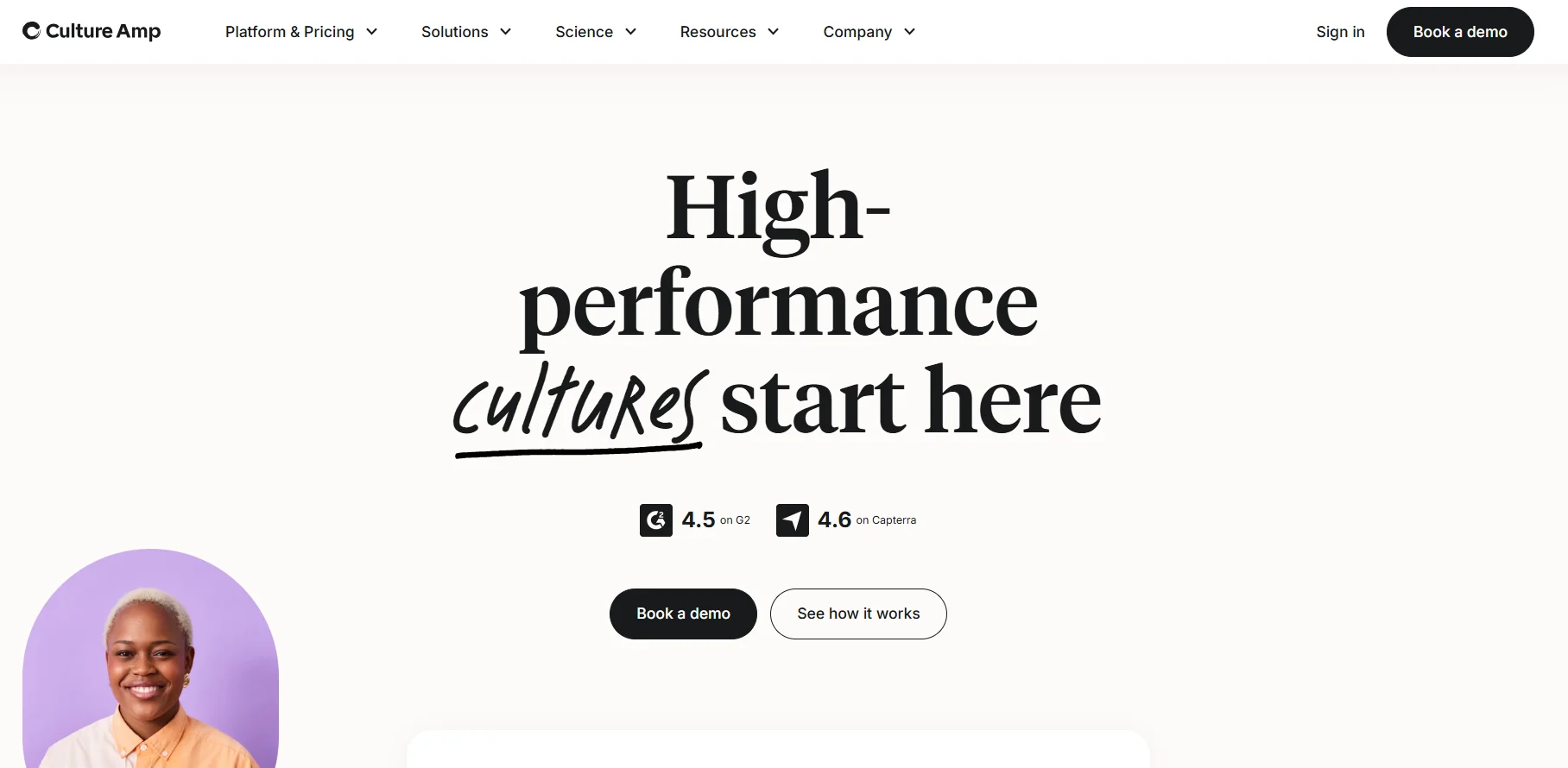
CultureAMP combines engagement surveys with performance reviews, using AI to extract trends and highlight at-risk teams. It also correlates performance scores with feedback data to spot systemic issues.
Best for: Enterprises investing in data-informed culture and retention
AI Capabilities: Theme detection in feedback, performance–engagement correlation, DEI metrics
Solves: Fragmented insights across feedback, reviews, and engagement
5. Gloat
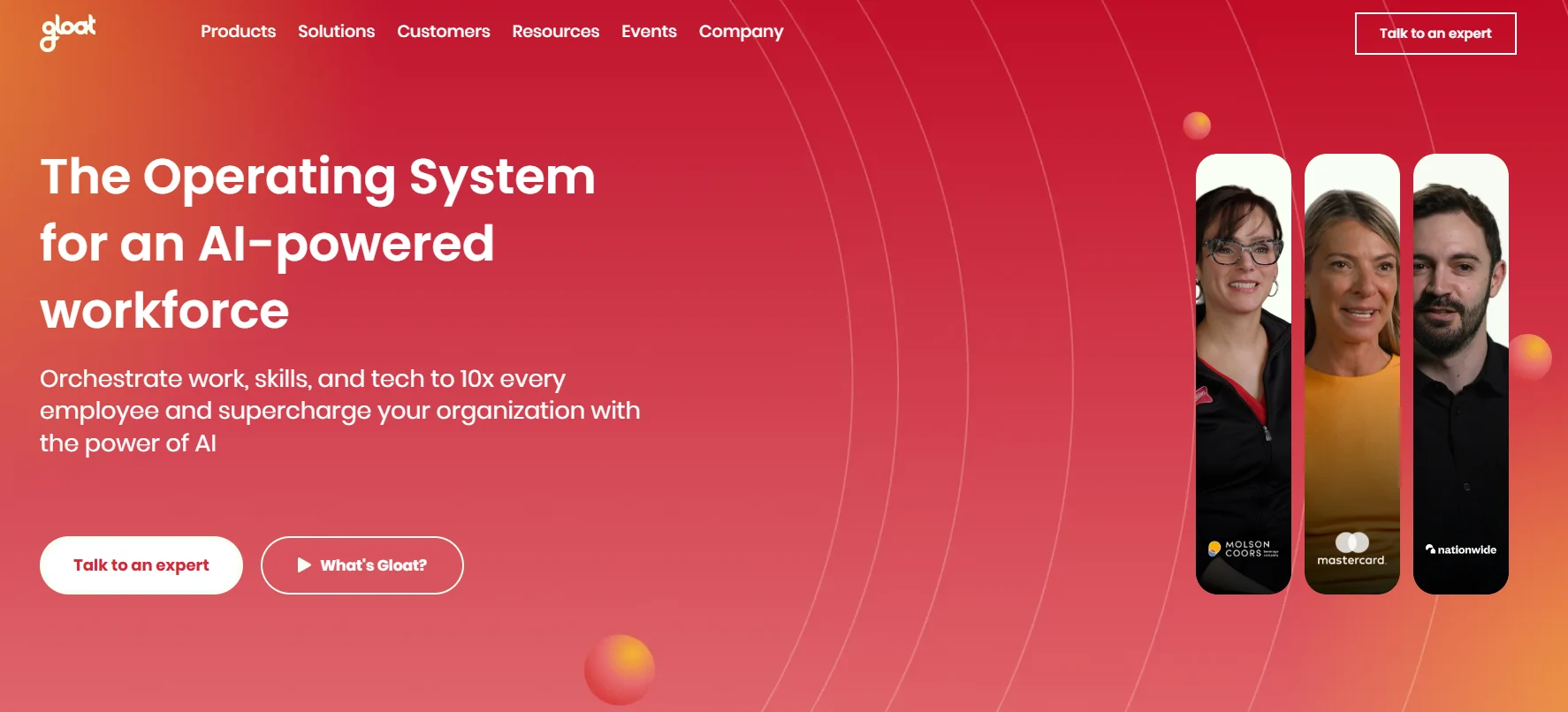
Gloat focuses on internal mobility as a retention strategy. Its AI matches employees with projects, gigs, or open roles based on their skills and goals, helping companies retain talent by creating growth pathways internally.
Best for: Large enterprises with evolving org structures and skill gaps
AI Capabilities: Internal marketplace, skill matching, mobility forecasting
Solves: Talent loss due to a lack of internal opportunities
AI Tools for HR Analytics and Workforce Planning
As HR evolves from an administrative function to a strategic partner, data is no longer optional, and AI is what turns that data into insight. In 2025, the best analytics platforms go far beyond dashboards. They forecast attrition, identify skills gaps, benchmark performance, and help HR leaders model “what if” workforce scenarios in real time.
Here are the most impactful AI-powered tools for people analytics and strategic workforce planning:
1. Visier
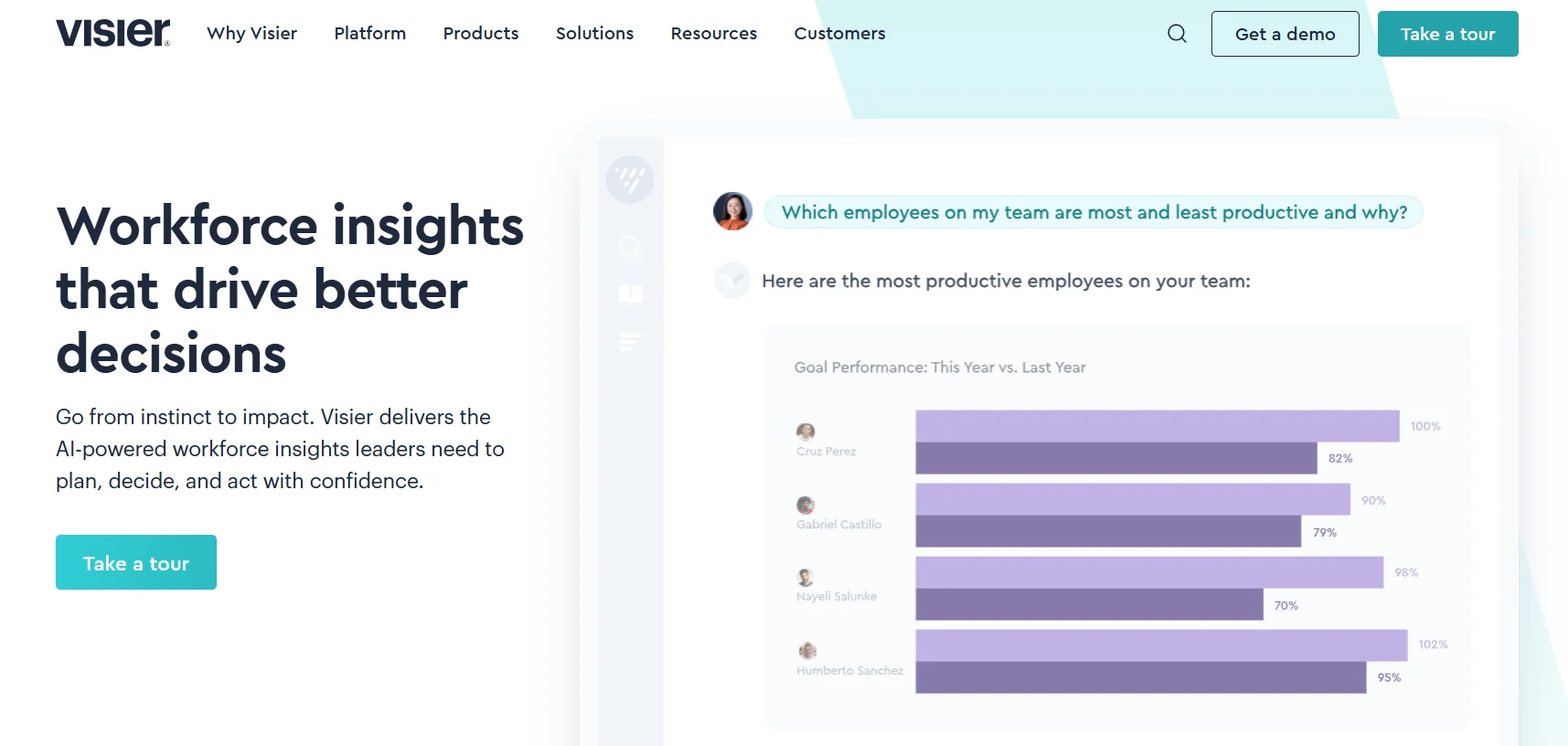
Visier is the market leader in enterprise-grade people analytics. Its AI models predict turnover, performance trends, and DEI gaps, helping HR teams move from reactive reporting to proactive strategy.
Best for: Large enterprises with complex, high-volume workforce data
AI Capabilities: Predictive attrition, scenario modeling, workforce trend forecasting
Solves: Disconnected data and lagging insights in large HR teams
2. Crunchr
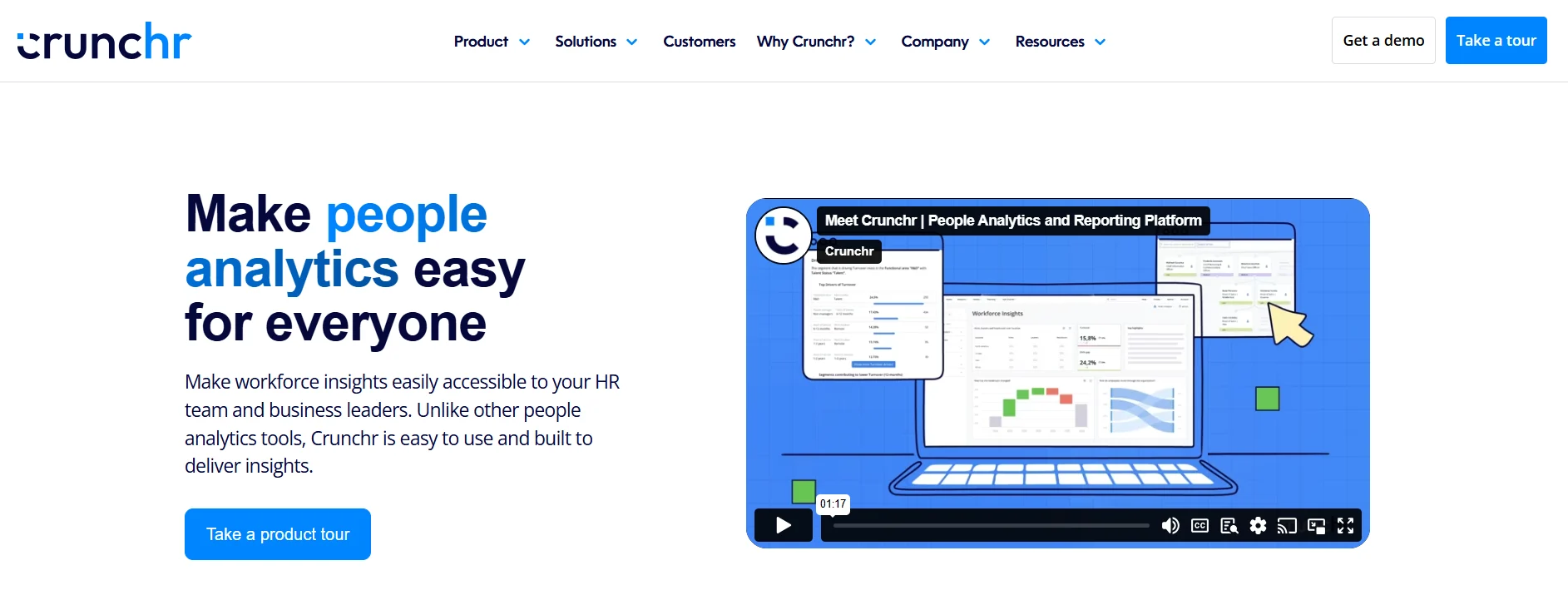
Crunchr democratizes people analytics by making advanced insights accessible to non-technical HR teams. Its AI surfaces trends, flags anomalies, and helps business partners explore data without needing an analyst.
Best for: Mid-sized companies needing agile, self-service analytics
AI Capabilities: Automated insights, predictive forecasting, story-based visualizations
Solves: Lack of in-house data expertise and slow access to actionable metrics
3. ChartHop
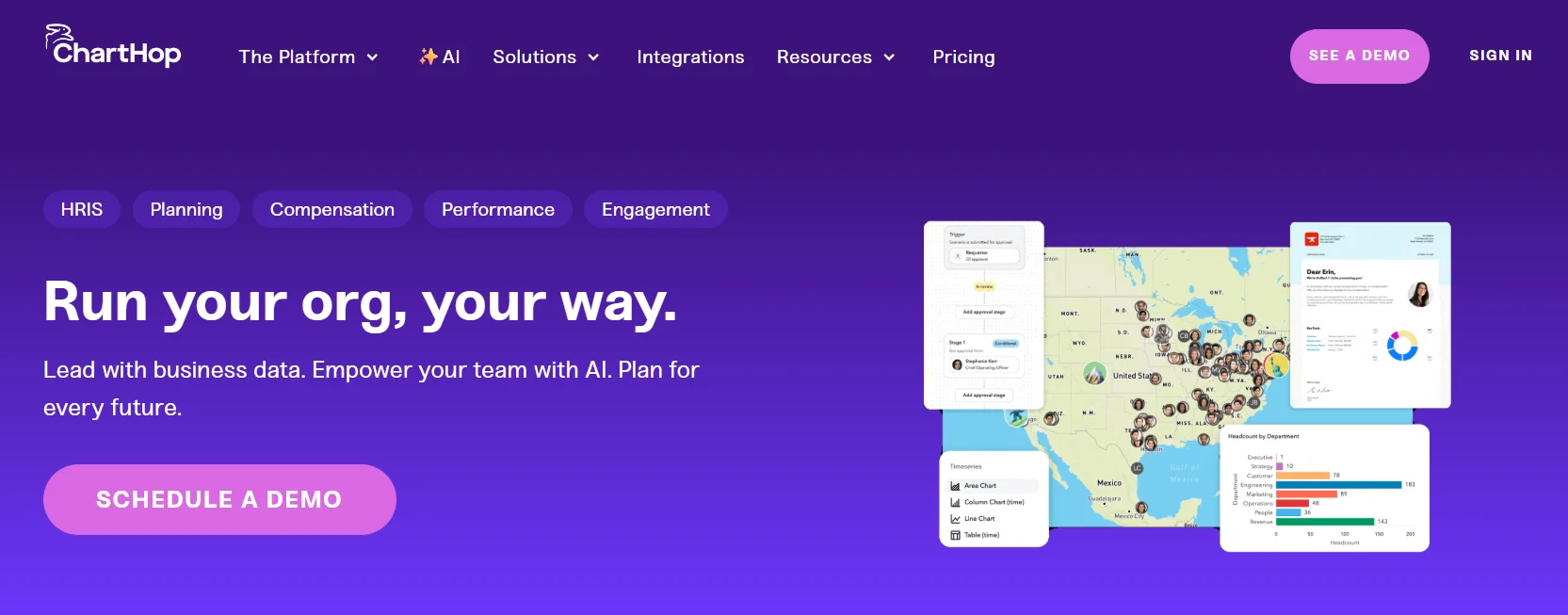
ChartHop brings org design and analytics together. Its AI helps HR and finance leaders model future headcount plans, track compensation equity, and visualize how organizational shifts affect performance or DEI goals.
Best for: Growing companies aligning people data with business planning
AI Capabilities: Scenario modeling, dynamic org charting, compensation analytics
Solves: Disconnected planning between HR and finance
4. ADP DataCloud
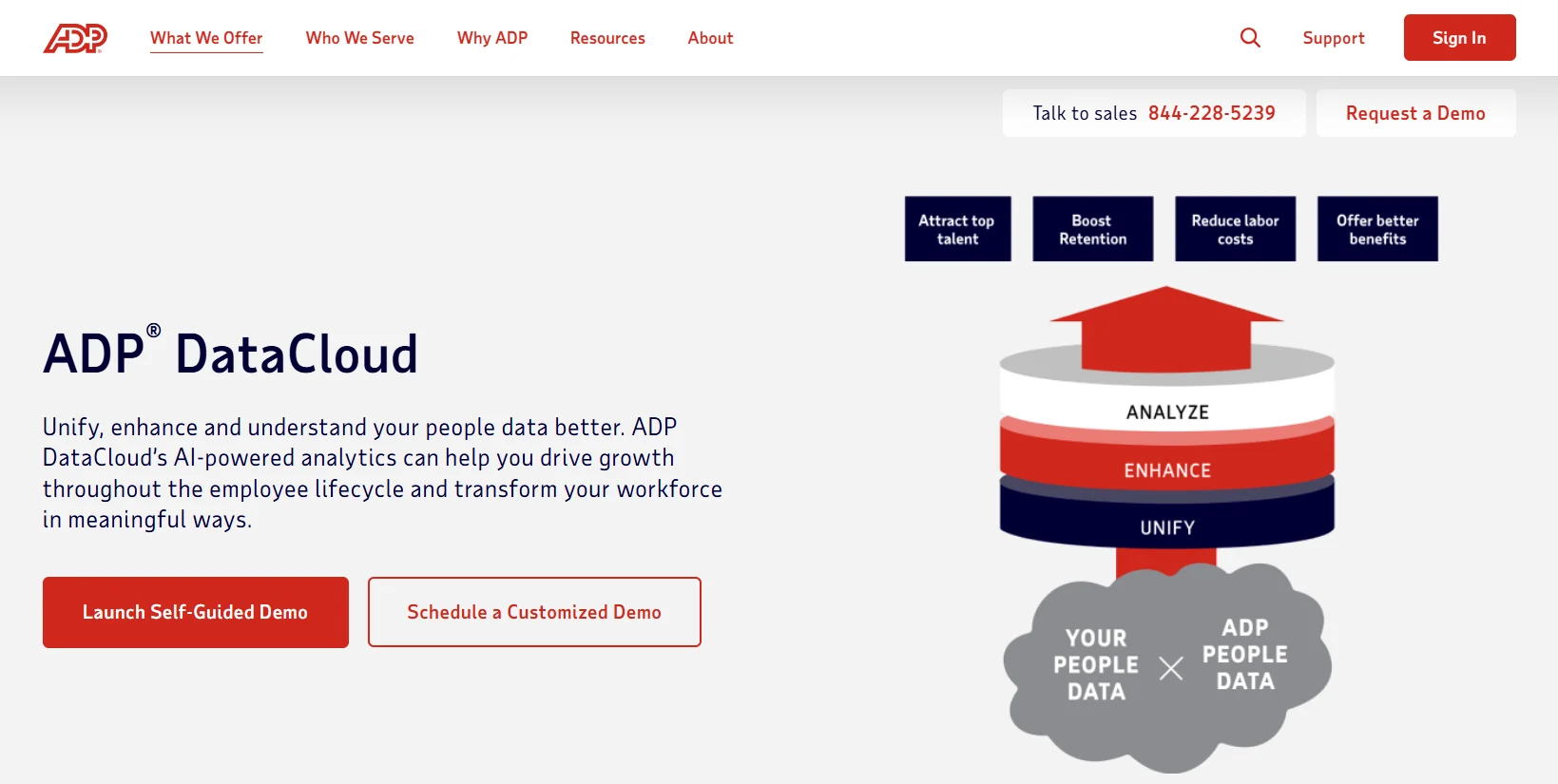
ADP DataCloud gives employers access to AI-powered benchmarking across millions of workforce records. It flags anomalies in compensation, turnover, or compliance compared to industry peers, using ADP’s massive anonymized dataset.
Best for: Companies already using ADP Workforce Now
AI Capabilities: Market benchmarking, predictive turnover risk, equity analysis
Solves: Lack of external context in HR decision-making
5. HiBob (People Analytics)
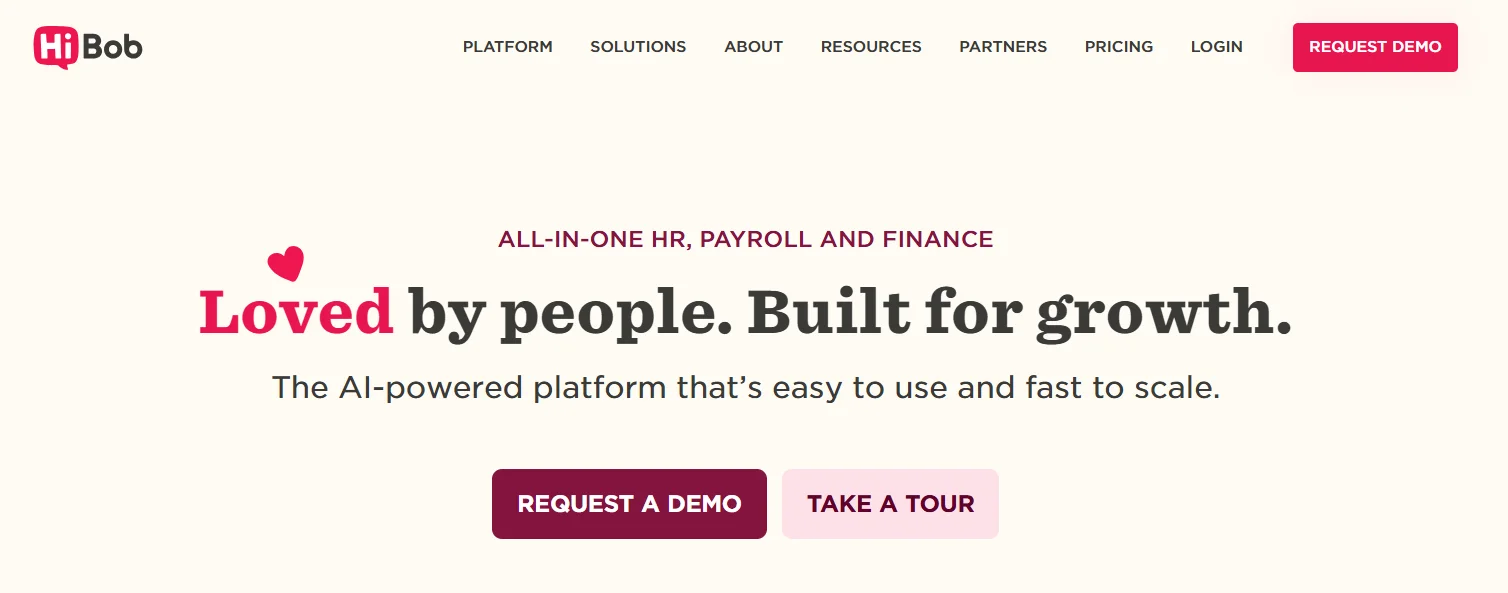
HiBob blends modern HRIS functionality with real-time AI analytics. It tracks engagement, compensation, and headcount trends, and provides interactive visualizations that managers can act on immediately.
Best for: Mid-sized companies adopting their first full-stack HR platform
AI Capabilities: Attrition prediction, engagement analytics, dynamic dashboards
Solves: Poor visibility into team trends and performance signals
Key Benefits of Using AI Tools in HR
AI tools enhance every stage of the HR process, not just by speeding things up, but by making outcomes more consistent, fair, and data-driven.
AI reduces time-to-hire: Automates sourcing, screening, and scheduling to fill roles up to 50% faster.
AI interviewers reduce bias: Use structured, data-backed scoring to ensure fair and consistent candidate evaluations.
AI improves retention forecasting: Predictive analytics flag disengagement and turnover risk before it escalates.
AI expands sourcing reach: Surfaces overlooked candidates from public data, internal systems, and underrepresented talent pools.
AI personalizes onboarding: Tailors content and workflows to each new hire, improving engagement and reducing early attrition.
AI unlocks performance insights: Analyzes feedback and engagement patterns to support better coaching and talent development.
AI makes HR more strategic: Equips HR teams with real-time insights to align talent decisions with business goals.
How to Choose the Right AI Tool for Your HR Needs
With dozens of AI tools available, the best choice depends on your team’s size, goals, and maturity. Here’s how to evaluate your options:
Company size: SMBs may benefit from lightweight, affordable tools like Effy AI or Manatal, while enterprises need scalable platforms like Visier, InterWiz, or Eightfold AI.
HR function focus: Start by identifying your biggest bottleneck, sourcing, interviews, onboarding, or retention, and choose a tool purpose-built for that stage.
Customization vs. plug-and-play: Some tools (like InterWiz or Enboarder) offer deep customization, while others (like BambooHR) prioritize fast setup and simplicity.
Data privacy and AI transparency: Ensure tools comply with regulations like GDPR or EEOC, and offer explainable AI, especially when automating evaluations or decisions.
Choosing AI tools by function, fit, and transparency ensures they actually support your HR strategy, not just add noise.
What’s Already Changing: The Emerging Impact of AI in HR
The future of AI in HR isn’t around the corner - it’s already here. The shift isn’t just technological; it’s cultural. AI is becoming embedded in everyday workflows, making HR more adaptive, strategic, and people-focused.
Generative AI for content creation: HR teams are using AI to draft job descriptions, offer letters, and performance reviews, accelerating routine writing tasks.
Real-time AI coaching: Some tools now deliver personalized nudges and coaching suggestions to managers based on team sentiment, feedback patterns, or productivity signals.
Voice and emotional analysis in interviews: Leading platforms are beginning to assess vocal tone, energy, and pace, offering new ways to evaluate soft skills and confidence.
Skills intelligence engines: AI is being used to track workforce skills, identify future gaps, and recommend internal mobility or upskilling paths in real time.
Hyper-personalized employee experiences: Onboarding, learning, and development platforms are already adapting journeys based on each employee’s actions, preferences, and performance.
These aren’t hypothetical trends; they’re already transforming how HR teams operate today. The role of AI isn’t to replace human decision-making, but to give it more clarity, consistency, and impact.
Also read: Will Human Resources Be Replaced by AI? Key Insights and Predictions
Bottom Line: Choosing the Right HR AI Stack
AI is no longer an add-on in HR; it’s becoming the operating layer. But the real advantage doesn’t come from adopting the most advanced tool. It comes from choosing the right combination of tools for your team, your workflows, and your goals.
Use InterWiz for structured, scalable interviewing without bias.
Choose tools like Visier or Crunchr to bring clarity to workforce planning.
Deploy onboarding platforms like Enboarder or Leena AI to improve early engagement.
Combine sourcing and analytics tools to go beyond hiring and start building long-term talent strategies.
The future of HR is AI-augmented, not AI-replaced. When used intentionally, AI empowers HR teams to act faster, reduce friction, and make smarter, more equitable decisions. The technology runs in the background, but the outcomes are deeply human.
FAQs About HR AI Tools
Can small businesses afford AI HR tools?
Yes, many AI-powered HR platforms now offer pricing tiers for SMBs, including tools like Manatal, Effy AI, and BambooHR. These provide automation and insights without enterprise-level costs.
Do AI interviews reduce bias?
Yes, AI interviewers use standardized questions and objective scoring, reducing the impact of unconscious bias, especially in early-stage screening.
Are AI tools legal for hiring decisions?
AI tools can be legally used in hiring, but they must comply with data privacy and anti-discrimination laws (e.g., GDPR, EEOC). Look for vendors who offer explainable AI and audit trails.
Which HR tasks are most commonly automated with AI?
Common tasks include resume screening, interview scheduling, candidate evaluation, onboarding communication, performance review summaries, and predictive attrition analysis.
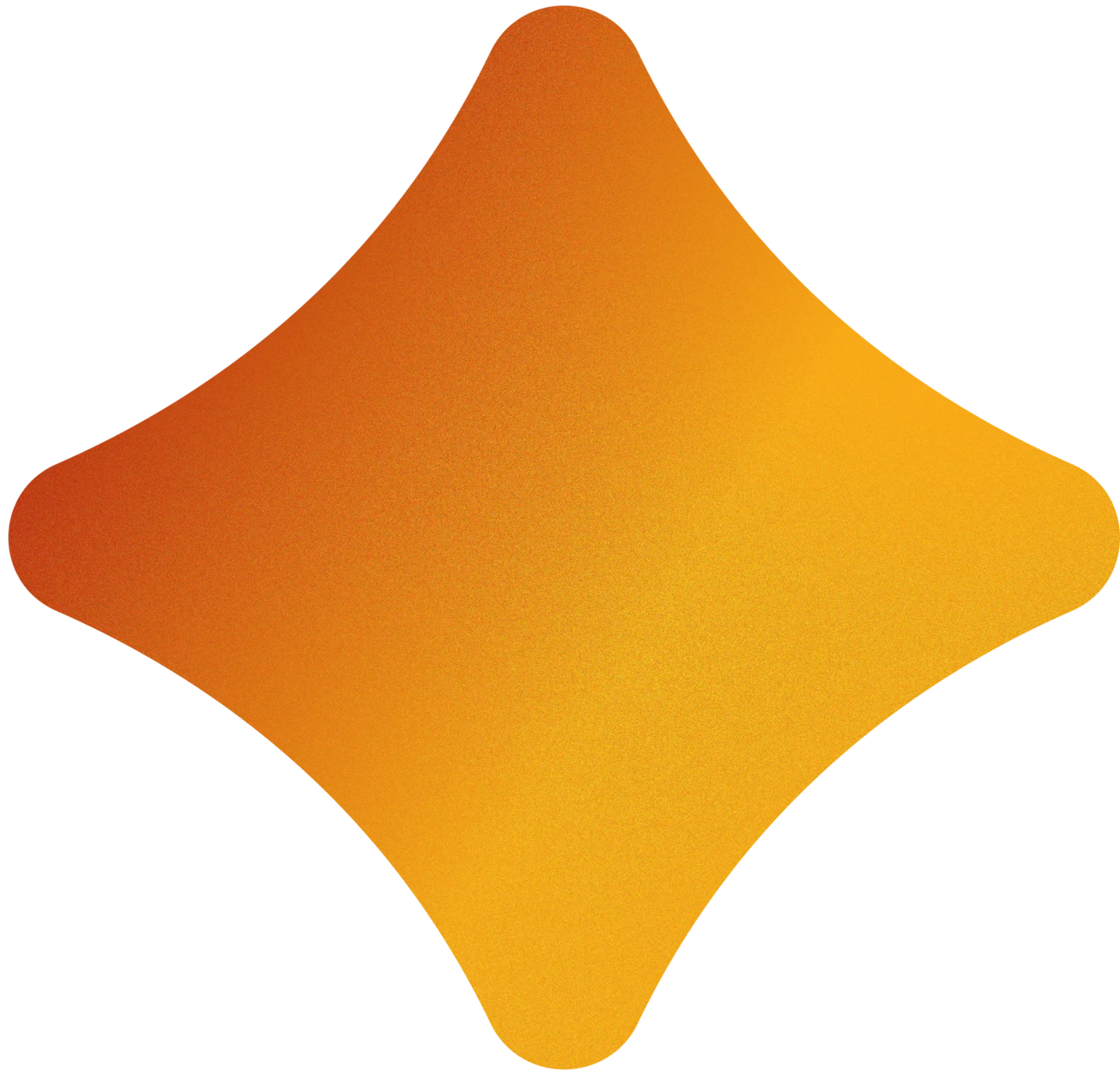
High Quality Screening with AI Interviews
Automated interviews built for speed, scale, and accuracy.
🔥 Full features, no credit card required.